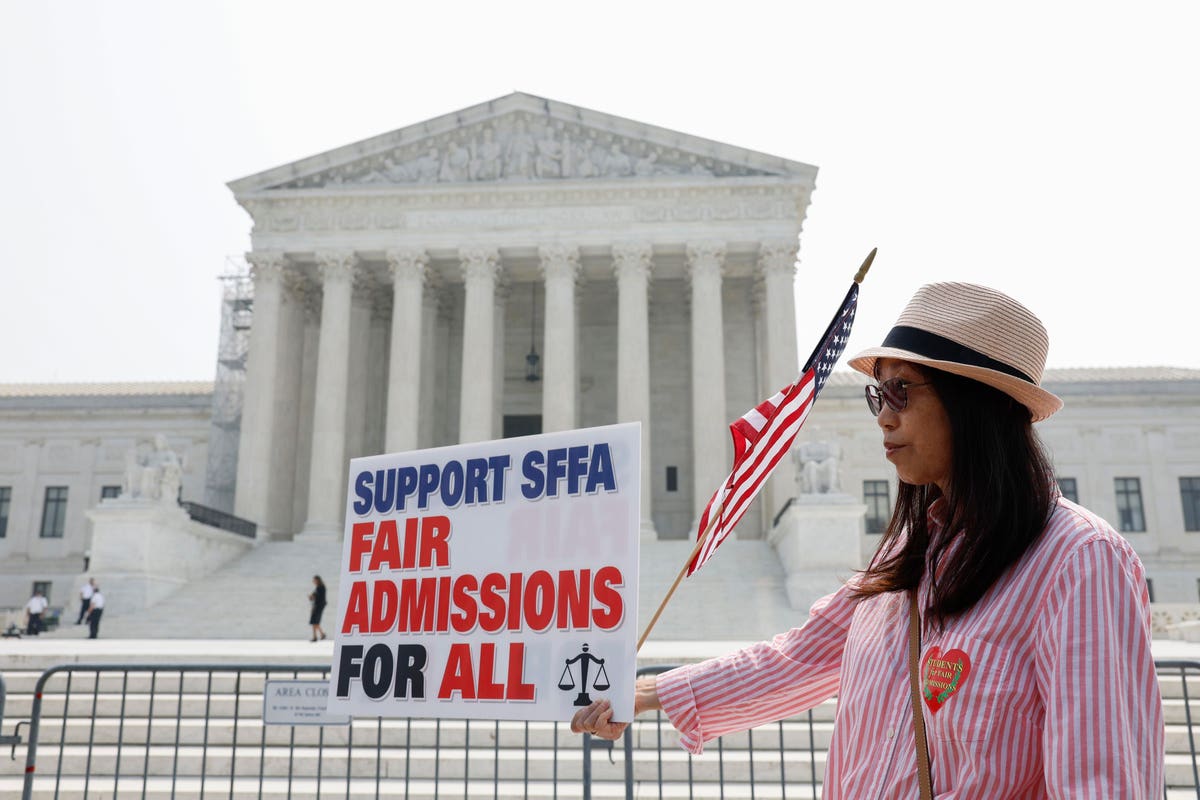Yesterday, the Supreme Court struck down the use of affirmative action in admissions decisions at colleges and universities with the exception of the military academies which they said have a distinct mission and focus on producing leaders for the armed forces. Why is the need for diversity in our leadership in the military any different from our need for diversity in leadership in the rest of America? African Americans make up 19 percent of active-duty enlistments, 9% of active duty officers but only 6.5 percent of generals. By contrast, only 1.4% or seven of the CEOs of Fortune 500 companies are African Americans and only 5.9% of all CEOs in the country are African American and 14.2% of the U.S. population is African American. Lack of diversity at the upper levels of corporate America is greater than in the military. Furthermore, 37.7% of Americans 25 years and older have a bachelor’s degree or higher while 41.8% of non-Hispanic Whites and only 28.1% of Blacks have a bachelor’s degree; this decision will make it more difficult for African Americans to gain college admissions especially at the most selective institutions.
Thirty-five former top military leaders — including four former chairmen of the Joint Chiefs of Staff, in a friend of the court brief emphasized that the officer corps already is significantly less racially diverse than the enlisted troops. Increasing that gap, they warned, could diminish the military’s legitimacy in the eyes of some Americans, hinder engagement with foreign countries and threaten internal morale. “History has shown that placing a diverse Armed Forces under the command of homogenous leadership is a recipe for internal resentment, discord, and violence. By contrast, units that are diverse across all levels are more cohesive, collaborative, and effective.”
The arguments are no different when it comes to Harvard and the University of North Carolina, the two universities in this case. These universities are the training ground for many of the top executives in the U.S. and the need for them to have a diverse student body is critical if we are to work to level the playing field in our country’s leadership. The decision continues to allow colleges and universities to consider a variety of other student characteristics in their admissions decisions including whether the student’s parents had attended the institution (legacy status), athletic prowess, geography, etc. Why not race? As Justice Sotomayor wrote “At its core, today’s decision exacerbates segregation and diminishes the inclusivity of our Nation’s institutions in service of superficial neutrality that promotes indifference to inequality and ignores the reality of race.” And Justice Brown wrote “With let-them-eat-cake obliviousness, today, the majority pulls the ripcord and announces ‘colorblindness for all’ by legal fiat. But deeming race irrelevant in law does not make it so in life.”
Brown continued “The Court has come to rest on the bottom-line conclusion that racial diversity in higher education is only worth potentially preserving insofar as it might be needed to prepare Black Americans and other underrepresented minorities for success in the bunker, not the boardroom (a particularly awkward place to land, in light of the history the majority opts to ignore)…The takeaway is that those who demand that no one think about race (a classic pink-elephant paradox) refuse to see, much less solve for, the elephant in the room— the race-linked disparities that continue to impede achievement of our great Nation’s full potential.”
I seriously question the inconsistency of the rationale for the military carve-out although I applaud that at least a few of our colleges will not be subject to these new constraints in making admissions decisions. As President Biden said “While the Court can render a decision, it cannot change what America stands for.”
Read the full article here








